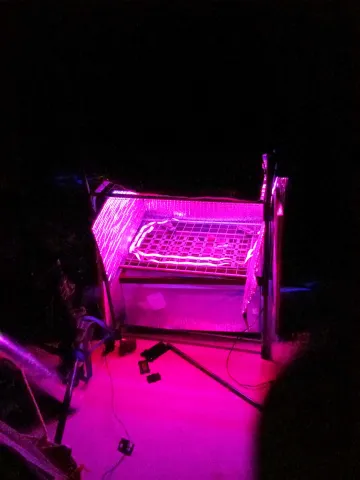
I would like to examine how recent scientific advances in using combinations of Red and Blue light to stimulate indoor plant growth can be combined with open embedded computing to provide a truly accessible method of growing fresh produce for almost any environment. Usage of LEDs in indoor horticulture has grown substantially in the past year alone. However, the vast majority of commercial LEDs appear to simply try to replicate the features of a more traditonal lighting source rather than truly using the new medium to its potential. This research grew out of two unrelated research notes on http://publiclab.org/profile/code4maine. The first one examined the possibility of using an open source tool developed by publiclab called www.infragram.org that enabled a specially modified webcam to monitor plant health by imaging the IR reflections where photosynthesis activity is concentrated. My research note, examines whether or not this technique could be applied to indoor gardening where the Infra Red light would be more controlled- http://publiclab.org/notes/code4maine/01-15-2014/will-infragram-help-with-indoor-hydroponics-aquaponics. The second research note was initially related to another tool which is used to visualize temperature changes through RGB lights- http://publiclab.org/notes/code4maine/01-22-2014/thermal-flashlight-using-mlx90614-ir-evaluation-board-from-sparkfun. However, the resulting discussion led me to discover a new open source, web-controllable, high-power LED called a Visualight- https://github.com/lpercifield/visualight/tree/rcgreen/Hardware for which a number of derivative builds are already in progress. My idea is to use the visual analysis obtained through an Infragram-enabled camera to adjust an array of High Power RGB LEDs through a Visualight derivative either manually or in real-time. Other more established features like ph monitoring, humidity, temp and automated dosing can also be included. LEDs do indeed require far less energy in the long term and put off much less heat than traditional lighting sources but the true advantages have yet to be realized in my personal opinion. In no particular order I would like to examine how the following LED capabilities impact indoor plant growth- Color- the ability for some LEDs to emit light from all points of the visual and nonvisual spectrum Blinking- the ability for LEDs to turn on and off in any interval without impacting the circuitry Form- The ability for LEDs to be embedded or shaped into nearly any form.